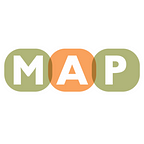MAP RESEARCH
LGBTQ Community Centers Continue to Serve More Than 45,000 People Each Week Amid the Pandemic
For many LGBTQ people, LGBTQ community centers are often the only local source of LGBTQ-inclusive, targeted social, educational, and health services. Especially during the COVID pandemic, LGBTQ community centers remain innovative and adaptable while meeting the needs of their communities.
According to a new report from MAP and CenterLink, LGBTQ community centers are often thinly staffed, underfunded, and under resourced, yet they serve more than 58,000 people each week (pre-pandemic, and 45,700 a week during the pandemic). Surveying 186 centers located in 43 states, D.C., and Puerto Rico, the seventh edition of the LGBTQ Community Center Survey Report provides a crucial snapshot of LGBTQ community centers across the country, both before the COVID pandemic and during the pandemic this summer.
Read the report: 2020 LGBTQ Community Center Survey Report: Assessing the Capacity and Programs of Lesbian, Gay, Bisexual, Transgender, and Queer Community Centers
Programs and Services: Adapting to the Pandemic
In March 2020, many centers were forced to close their physical doors due to COVID. But centers adapted in many ways, including significantly expanding their online and virtual offerings.
Prior to COVID, 21% of participating centers had some kind of program or service available online. By July 2020, 94% of centers offered online programs, with 74% of those centers planning to keep at least some of those online programs or services after the pandemic ends.
As noted above, centers continue to serve tens of thousands of people per week, both in-person and virtually. Small centers — those with an annual budget of $150,000 or less — have actually seen a 34% increase in the average weekly number of clients, while big centers have seen a 24% decrease in average weekly clients.
While centers offer many types of programs — ranging from basic needs and legal services to social, arts and cultural, and educational programs — the COVID outbreak led centers overall to scale back many types of programming except those focused on basic needs, such as food pantries and providing direct cash assistance to community members.
For example, prior to COVID, only 19% of centers offered direct cash assistance to community members. But by July 2020, nearly one-third (32%) of centers were offering emergency cash assistance to community members — a nearly 70% increase in the number of centers with such a program.
LGBTQ Community Centers Navigate Financial Uncertainty
Though LGBTQ centers are adapting quickly, creatively, and effectively to the pandemic, centers are also navigating significant financial challenges. Collectively, the combined pre-COVID 2020 budget of participating LGBTQ centers was nearly $315 million, but just four months into the pandemic (July 2020, the time of the survey), centers reported an adjusted combined budget of $304 million — a decrease of over $10 million due to the pandemic.
Small centers have been hit particularly hard, with small center 2020 budgets collectively decreasing 14% over the course of the year, compared to 3% for large centers. While many centers still expect financial growth relative to 2019, by July 2020, COVID had already cut small centers’ planned growth by more than half, and large centers’ growth by more than one-quarter. Many centers noted these losses may grow as the pandemic continues.
At the time of the survey (July 2020), 74% of centers had not yet been forced to make any changes to the number of staff or staff hours as a result of COVID, and 89% had not made any changes to staff compensation or benefits. Additionally, some centers have added staff to help manage new or COVID-responsive programming. Overall, there are nearly 2,500 paid staff working at 160 centers. Nearly 14,000 people volunteer at participating community centers, volunteering over half a million hours each year.
Government support in the wake of COVID has been critical for LGBTQ centers. Among those centers that were forced to lay off or furlough staff, some were able to hire back staff after receiving the federal Paycheck Protection Program (PPP) loan. Eighty-two percent of participating centers applied for PPP loans totaling over $14 million.
Prioritizing the Work of LGBTQ Community Centers
Now more than ever, it is critical that individuals, communities, funders and foundations, governments, and the LGBTQ movement prioritize LGBTQ community centers with additional support and assistance needed to grow and sustain their work.
Given the critical role of LGBTQ community centers in areas of the country with few other resources for LGBTQ people, and the large gulf between large centers and small centers, the report finds that small centers, especially during the COVID pandemic, are in critical need of additional financial support and government action. The report concludes with the recommendation that investing in these centers is a targeted and focused way to increase the infrastructure of the LGBTQ movement and the support for LGBTQ people living across the country.
Take Action
- READ the report: lgbtmap.org/2020-lgbtq-community-center-survey-report
- FIND a CenterLink LGBT Center near you: lgbtcenters.org/lgbtcenters
- DONATE to support more impactful policy reports like 2020 LGBTQ Community Center Survey Report
